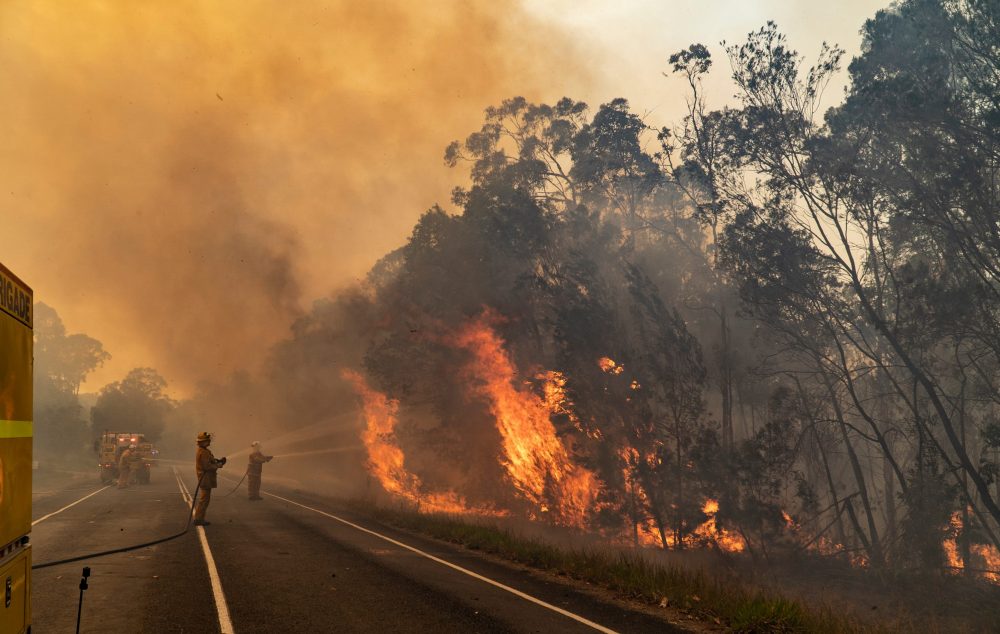BAL Report Fundamentals: Vital Info for Property Owners
Just How BAL Report Impacts Shrub Fire Protection Actions
In the realm of bush fire defense, the Structure Attack Degree (BAL) report stands as a vital tool that considerably affects the safety and security and resilience of homes in fire-prone locations - BAL Report. The impact of a BAL evaluation expands much beyond simple documentation; it acts as the cornerstone for establishing the appropriate construction criteria and fire security steps essential to alleviate the dangers presented by bushfires. As areas face significantly extreme fire periods, recognizing exactly how the BAL report forms these safety actions becomes extremely important for home owners, policymakers, and building contractors alike
Comprehending the Bushfire Assault Level

Relevance of BAL Report Assessment

Furthermore, the BAL record analysis functions as a fundamental action in complying with legal responsibilities and demands connected to bushfire protection. Local councils and authorities commonly mandate the submission of a BAL report as part of the planning and structure authorization procedure to ensure that residential or commercial properties are sufficiently protected against bushfire risks. Failing to conduct a thorough BAL record analysis can cause insufficient security steps, leaving homes susceptible to devastating bushfire incidents.
Construction Criteria Based on BAL
A comprehensive understanding of the Bushfire Attack Level (BAL) enables homeowner to apply construction standards tailored to their particular danger profile. Construction requirements based on BAL are vital in mitigating the effect of bushfires on properties. The BAL rating categorizes the potential danger a home faces throughout a bushfire on a scale from BAL-Low to BAL-FZ (Fire Zone) Each BAL degree corresponds to details building needs detailed in the Australian Basic AS3959-2018 Building And Construction of Structures in Bushfire-Prone Areas. As an Website example, homes classified as BAL-Low may just need standard steps such as getting rid of debris and keeping gardens, while those in greater BAL categories require more robust actions like cinder displays, fire-resistant materials, and secured windows. Abiding by these construction requirements not just enhances the structural resilience of the home yet additionally boosts the overall security of citizens throughout a bushfire event. For that reason, property owners should very carefully consider their BAL rating and follow the equivalent construction requirements to effectively protect their homes and owners.
Executing Fire Defense Procedures
With the foundation of construction requirements based on Bushfire Assault Degree (BAL) in area, the emphasis currently changes in the direction of the sensible execution of fire defense measures to fortify homes versus bushfire dangers. Easy procedures consist of utilizing fire-resistant structure products, why not find out more mounting ash guards on vents, sealing spaces in roofings and wall surfaces, and maintaining a clear room around the building totally free from flammable greenery. By incorporating both passive and active approaches, buildings can substantially minimize their susceptability to bushfire cases and boost the safety of residents.
Shielding Houses Versus Bushfires
Successfully securing homes against the damaging influences of bushfires calls for a extensive and aggressive technique to fire protection actions. Property owners living in bushfire-prone locations should prioritize the application of various strategies to boost their building's durability against wildfires. One basic facet is creating a defensible room around the home by keeping a clear zone without flammable products. This consists of on a regular basis cutting vegetation, eliminating dead plants, and ensuring a risk-free distance in between frameworks and trees. Installing fireproof roof covering materials can additionally substantially reduce the danger of ember assaults and straight flame call. Additionally, securing vents and spaces to avoid coal breach, along with including fire-resistant doors and windows, can help fortify the home's protection against bushfires. Spending in a dependable water resource, such as a properly maintained lawn sprinkler or a specialized water storage tank, is vital for providing water throughout fire emergencies - BAL Report. By embracing a positive position and integrating these safety steps, house owners can significantly raise their opportunities of safeguarding their homes against bushfires.
Verdict
In conclusion, the Bushfire Strike Degree (BAL) record plays a vital role in determining the required protection measures versus bushfires. Applying fire security procedures based on the BAL record is crucial in guarding residential or commercial their website properties from potential bushfire threats.
In examining bushfire threat to buildings, recognizing the Bushfire Assault Level (BAL) is an important part for applying effective defense actions. Generally, a clear understanding of the Bushfire Strike Degree is crucial for carrying out ample defense actions and alleviating the impact of bushfires on residential or commercial properties.
